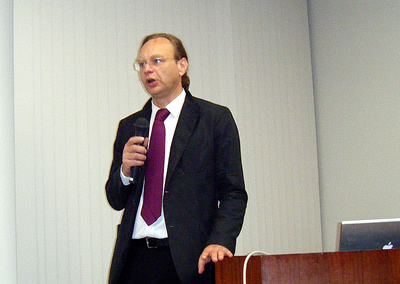Fabry disease is an inherited and multi system inherited,
X-linked disease, caused by a deficiency of the lysosomal
enzyme Alpha-galactosidase A, resulting in a widely distributed
accumulation of Gb3 (globotriaosylceramide), the main storage
product. The clinical features are including angiokeratoma,
cataract, renal failure and cardiomyopathy. Among them,
cardiac disease was the main cause of death in both males
(34%) and females (57%) by FOS (the Fabry Outcome Survey).
Importance of renal diseases as a cause of death in patients
with Fabry disease is decreasing with improvements in the
management of renal disease, while the importance of cardiac
disease is increasing.
Incidence of hypertrophic cardiomyopathy (HCM) is 1/500
males over 40 years old and 1-9 in 100 of unrelated HCM
patients have Fabry disease. Clinical symptoms of Fabry
cardiomyopathy are angina pectoris, dyspnea, palpitations,
fatigue, syncope, and fibrosis in severe cases. Fabry
cardiomyopathy is progressive and the prevalence of cardiomyopathy
increases age dependently, leading to increasing LV mass
and premature death. In Fabry cardiomyopathy, the intracellular
aggregation of Gb3 leads to a swelling of the cell and
therefore a progressive loss of cell integrity and cell
function.
Treatment and management of heart failure in Fabry cardiomyopathy
includes the increase enzyme activity (ERT; enzyme replacement
therapy and chaperone), concomitant therapy (antiarrhythmics,
ACE, ARB, anti-anginal) and in case of failure heart transplantation.
Potential effects of ERT are, stop of progression of disease,
reduction of cardiomyopathy, normalization of left ventricular
mass, avoiding development of disease related alterations
and changing the natural course of the disease.
There are two different ERTs available. One is Agalsidase
alfa (Replagal; TKT/Shire HGT; produced in a human cell
line after virus-free gene activation) and the other is
Agalsidase beta (Fabrazyme; Genzyme, recombinant and produced
in a CHO cell line).
We conducted and contributed to several studies with
agalsidase alfa in male and female patients and in children.
In children treated for more than 4 years, urine Gb3 decreases
to normal level within 1.5 year which indicates clearence
of Gb3 from the body. Pain index decreases within 1.5
year but after that the index is stable. Autonomic cardiac
control becomes normal after 6 months. No IgE antibodies
ever detected during the study. Only 6% of children develop
IgG antibodies, but the titres increase within the first
year of treatment and thereafter stabilized. Based on
the results of these trials, ERT with agalsidase alfa
is recommended in all males as early as possible and in
all females with symptoms, although guidelines for children
have not been established so far.
Agalsidase alfa and beta are believed to be similar in
structure and functionally equivalent. Is efficacy dose
dependent (high dose is recommended)? No publication or
study has ever been able to prove this hypothesis so far,
although several studies tried to compare alfa or beta
or both on Fabry disease.
